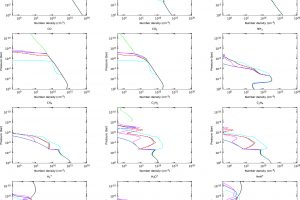The XUV emission of the star HIP67522 and the evolution of its exoplanet. The study: “XUV irradiation of young planetary atmospheres. Results from a joint XMM-Newton and HST observation of HIP67522” of A. Maggio (INAF-OAPA) appeared on A&A

Despite the wide array of telescopes and satellites available to the astronomical community, there is a type of radiation to which we are virtually blind: the extreme UV band. This is high-energy radiation with a wavelength that ranges from the Lyman-α emission, caused by hydrogen atoms whose electron transitions from the innermost orbital (the ground state) to the second (n=2),
» Read more
